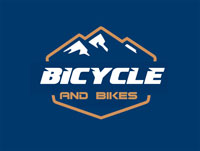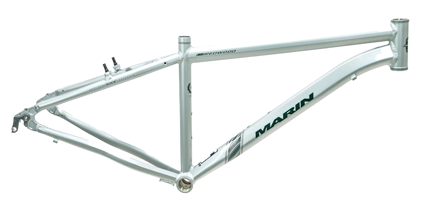Buying A Hybrid Bike
Buying A Hybrid Bicycle
What You Need To Consider Before Purchasing
When it comes to buying a hybrid bike, there are several important factors to consider to ensure you find the perfect ride that matches your needs and preferences.
In this helpful guide, we’ll explore the key considerations that will help you make an informed decision when buying a hybrid bike.
From frame materials to component choices, we’ll cover everything you need to know to find the ideal hybrid bike for your cycling adventures.
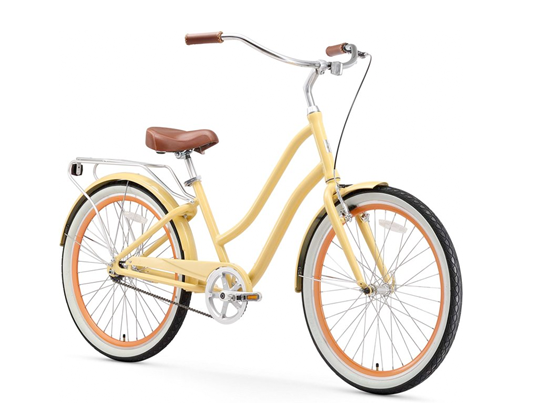 Key Considerations When Buying a Hybrid Bike
Key Considerations When Buying a Hybrid Bike
Purpose & Riding Style
First and foremost, determine your primary purpose for the bike and the type of riding you’ll be doing.
Are you planning to use it for daily commuting, leisurely rides, fitness workouts, or light off-road adventures?
Understanding your riding style and intended use will help narrow down the features and specifications you should prioritize.
Frame Materials
When buying a hybrid bike, one of the key considerations is the frame material.
The frame material not only affects the bike’s weight but also its durability, comfort, and overall riding experience.
Here are the most common frame materials used in hybrid bikes:
Aluminum
Aluminum frames are popular in hybrid bikes due to their lightweight nature and affordability.
They offer a good balance between weight, stiffness, and cost-effectiveness.
Aluminum frames provide a responsive ride and are resistant to corrosion.
They are a great choice for riders seeking a lightweight and budget-friendly option.
Carbon Fiber
Carbon fiber frames are known for their exceptional strength-to-weight ratio.
They are lightweight, stiff, and provide excellent vibration dampening properties, resulting in a comfortable and smooth ride.
Carbon fiber frames are often found in higher-end hybrid bikes, offering enhanced performance but at a higher cost.
Steel
Steel frames are known for their durability, strength, and smooth ride quality.
While they are slightly heavier compared to aluminum and carbon fiber, steel frames absorb road vibrations effectively, providing a comfortable and stable ride.
Steel frames are favored by riders seeking a classic aesthetic and a reliable bike that can handle various terrains.
Hybrid
Some hybrid bikes feature frames made from a combination of materials, such as aluminum and carbon fiber or steel and carbon fiber.
These hybrid frame constructions aim to provide the best characteristics of each material, combining lightweight, stiffness, comfort, and durability.
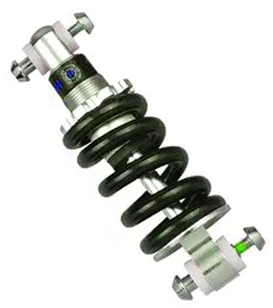 Suspension
Suspension
The presence or absence of suspension on a hybrid bike is an important consideration that can significantly impact your riding experience.
Here’s what you need to know about suspension when buying a hybrid bike:
Rigid Forks
Many hybrid bikes feature a rigid fork, meaning they do not have any suspension.
Rigid forks provide a lightweight and efficient ride, making them suitable for urban commuting, fitness riding, and smoother surfaces.
They offer precise handling and direct power transfer, resulting in better pedaling efficiency.
Front Suspension
Some hybrid bikes are equipped with front suspension forks, also known as suspension forks or shocks.
These forks feature a suspension system that absorbs impacts from rough terrain, such as bumps, potholes, and small obstacles.
Front suspension forks enhance comfort and control, making them ideal for riders who plan to venture off-road or encounter uneven surfaces.
Suspension forks come with varying amounts of travel, typically ranging from 50mm to 80mm.
Longer travel provides more shock absorption but may add weight and reduce pedaling efficiency on smoother surfaces.
Full Suspension
It’s important to note that full suspension (both front and rear suspension) is less common in hybrid bikes.
Full suspension setups are primarily found in mountain bikes and offer enhanced shock absorption and control in more technical off-road terrain.
Which Type of Terrain?
When deciding on suspension for your hybrid bike, consider the type of terrain you’ll be riding on and the level of comfort you desire…
Smooth Roads and Commuting
If your rides predominantly involve smooth roads, bike paths, and urban commuting, a rigid fork will provide the most efficient and lightweight setup.
It allows for better energy transfer and a more responsive ride.
Light Off-Road and Gravel Paths
For riders who plan to tackle light off-road trails or gravel paths, a hybrid bike with a front suspension fork can enhance comfort and control by absorbing small to moderate impacts.
It’s worth noting that adding suspension to a hybrid bike can increase the overall weight and cost of the bike.
If your primary riding terrain is primarily smooth roads or paved surfaces, a rigid fork may be more suitable as it offers a lighter and more efficient setup.
However, if you anticipate encountering rougher or uneven terrains, a front suspension fork can help provide a smoother and more comfortable ride.
Consider your riding style, preferences, and the type of terrain you’ll encounter to make an informed decision on whether to opt for suspension on your hybrid bike.
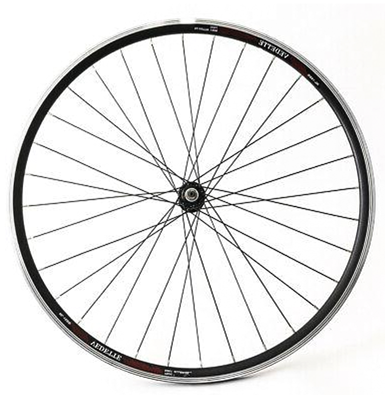 Tire Size & Tread
Tire Size & Tread
When selecting a hybrid bike, considering the tire size and tread pattern is crucial as it directly impacts your bike’s performance and versatility across different terrains.
Here are key points to keep in mind regarding tire size and tread:
Tire Size
Hybrid bikes come with a range of tire sizes, typically falling between road bike tires (700c) and mountain bike tires (26-inch or 29-inch).
The tire size you choose depends on the type of terrain you plan to ride on:
700c
These larger diameter tires are common in hybrid bikes and offer efficient rolling on paved surfaces.
They provide a smooth and fast ride for city commuting, road riding, and lighter gravel paths.
26-inch or 29-inch
Some hybrid bikes, particularly those with more off-road capabilities, may feature smaller mountain bike-sized tires.
The 26-inch size provides enhanced maneuverability and agility, while the 29-inch size offers better traction and stability on rougher terrain.
Tread Pattern
The tread pattern of the tire determines its grip and traction on different surfaces.
Hybrid bikes usually have tires with a semi-slick or lightly treaded design to balance efficiency on roads and grip on gravel or dirt paths.
Consider the following tread patterns:
Slick or Semi-Slick
These tires have a smooth central section that maximizes rolling efficiency on paved surfaces.
The outer edges may have minimal tread or small grooves to provide some grip on loose surfaces.
Mixed Tread
Some hybrid tires feature a combination of smooth and treaded sections.
This design aims to provide a good compromise between on-road speed and off-road traction.
Knobby Tread
Hybrid bikes with more off-road capabilities may have tires with a more pronounced tread pattern, similar to those found on mountain bikes.
These tires offer increased traction and control on loose or muddy terrain.
The tire size and tread pattern you choose should align with the type of riding you plan to do.
If you primarily ride on smooth roads and paved surfaces, a larger 700c tire with a slick or semi-slick tread pattern will provide optimal efficiency.
For riders who want to tackle gravel paths or light trails, smaller-sized tires with a mixed or knobby tread pattern offer better grip and control.
Consider the specific terrain and conditions you’ll encounter to select the most suitable tire size and tread pattern for your hybrid bike.
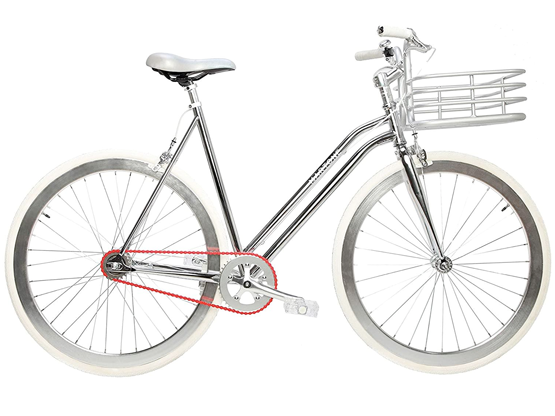 Gearing Systems
Gearing Systems
The gearing system of a hybrid bike refers to the arrangement and number of gears that the bike offers.
Having an appropriate gearing system is crucial for adjusting your pedaling effort to match the terrain, whether you’re climbing steep hills, riding on flat roads, or cruising at high speeds.
Here are some key points to consider regarding the gearing system of a hybrid bike:
Number of Gears
Hybrid bikes typically come with either a single-speed, a derailleur-based multi-speed system, or an internally geared hub system.
Single-Speed
Single-speed bikes have one fixed gear ratio, offering simplicity, low maintenance, and a lightweight setup.
They are suitable for flat or gently rolling terrain, and riders who prefer a straightforward and minimalist riding experience.
Derailleur-Based Multi-Speed
This is the most common gearing system found in hybrid bikes.
It consists of front and rear derailleurs, multiple chainrings at the front, and a cassette or freewheel with several sprockets at the rear.
The number of gears can vary, typically ranging from 7 to 27 or more.
Multi-speed systems allow for a wide range of gear ratios, enabling riders to tackle various terrains with ease by shifting gears.
Internally Geared Hub
Some hybrid bikes feature internally geared hubs, where the gears are contained within the rear hub.
These systems offer a clean and low-maintenance setup with a specific number of gears, such as 3, 7, or 8.
Internally geared hubs are known for their simplicity, reliability, and ease of use, making them a great choice for riders seeking a hassle-free riding experience.
Gear Range
Consider the gear range provided by the gearing system.
A wider gear range with both low and high gears enables you to tackle steep climbs with ease and maintain higher speeds on flats.
If you anticipate encountering hilly terrains or varied landscapes, opt for a hybrid bike with a wider gear range to ensure you have suitable gears for different riding conditions.
Shifting Mechanism
Evaluate the shifting mechanism of the gears.
Hybrid bikes may have either trigger shifters, thumb shifters, or twist shifters.
Choose a shifting mechanism that feels comfortable and intuitive to use, allowing you to shift gears effortlessly while maintaining control of the bike.
Brands and Components
Consider the brands and quality of the gears and components used in the hybrid bike’s gearing system.
Reputable brands such as Shimano, SRAM, and Campagnolo are known for their reliable and precise shifting performance.
Higher-end hybrid bikes may feature more advanced and durable components that provide smoother gear changes and better overall performance.
When selecting a hybrid bike, assess your riding style, the terrain you’ll encounter, and your preference for simplicity or gear range.
If you’re primarily riding on flat terrain or prefer a minimalist setup, a single-speed or internally geared hub system may be suitable.
For riders who plan to tackle varying terrains and gradients, a derailleur-based multi-speed system with a wider gear range will offer more versatility.
Test ride different gear systems to find the one that suits your riding needs and provides a comfortable and efficient pedaling experience.
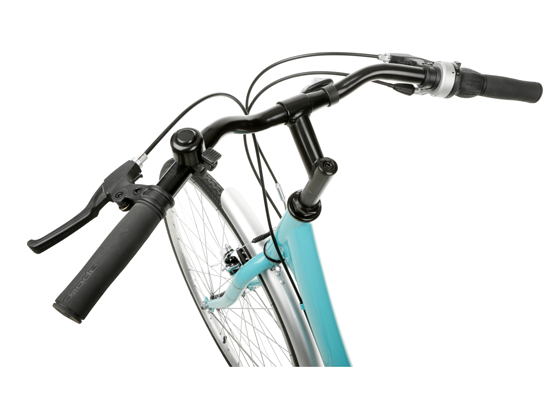 Brakes
Brakes
When choosing a hybrid bike, the type of brakes it is equipped with is an essential consideration for your safety and riding experience.
Here are the two primary types of brakes found on hybrid bikes:
Rim Brakes:
Caliper Brakes
Caliper brakes are a common type of rim brakes found on hybrid bikes.
They operate by squeezing brake pads against the sides of the wheel rims to create friction and slow down or stop the bike.
Caliper brakes are lightweight, affordable, and offer good stopping power in dry conditions.
However, they may have reduced effectiveness in wet or muddy conditions.
Linear Pull Brakes (V-Brakes)
Linear pull brakes, also known as V-brakes, are another popular rim brake option.
They use longer brake arms that provide more leverage, resulting in increased stopping power compared to caliper brakes.
V-brakes are also affordable and easy to maintain. Like caliper brakes, they may be less effective in wet conditions.
Disc Brakes:
Mechanical Disc Brakes
Mechanical disc brakes use a cable-operated mechanism to engage brake pads onto a disc rotor mounted on the wheel hub.
They offer reliable stopping power and perform well in various weather conditions.
Mechanical disc brakes are generally easier to maintain and repair compared to hydraulic disc brakes.
Hydraulic Disc Brakes
Hydraulic disc brakes utilize hydraulic fluid to transfer force from the brake lever to the brake caliper, engaging the brake pads onto the disc rotor.
They provide excellent stopping power and precise modulation, resulting in consistent braking performance even in wet or muddy conditions.
Hydraulic disc brakes require less finger effort to operate and offer more control.
When deciding on the brake type for your hybrid bike, consider the following factors:
Riding Conditions
If you’ll be riding in wet or muddy conditions, or if you anticipate encountering steep descents, disc brakes, especially hydraulic disc brakes, offer superior stopping power and better performance.
Maintenance
Rim brakes are generally easier to maintain and repair, and replacement parts are more readily available. Disc brakes may require more complex maintenance procedures, such as bleeding the hydraulic system, but offer longer-lasting performance.
Personal Preference
Some riders have personal preferences for a specific brake type based on their past experiences or riding style.
Test ride different brake types to see which one feels most comfortable and responsive to your preferences.
Both rim brakes and disc brakes have their advantages, and the choice ultimately depends on your riding conditions, maintenance preferences, and personal preference for braking performance.
Consider these factors when selecting a hybrid bike, and choose the brake type that best suits your needs for safety, control, and riding enjoyment.
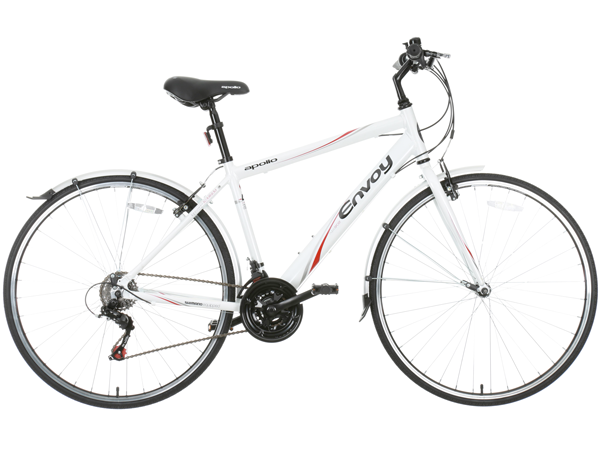 Geometry and Riding Position
Geometry and Riding Position
The geometry and riding position of a hybrid bike play a crucial role in determining your comfort, handling, and overall riding experience.
Here are some key points to consider regarding geometry and riding position when buying a hybrid bike:
Frame Geometry
Hybrid bikes generally have a more relaxed or upright frame geometry compared to road bikes or mountain bikes.
This design aims to prioritize comfort and stability, making them suitable for casual rides, commuting, and recreational cycling.
The frame geometry of a hybrid bike typically includes the following elements:
Head Tube Angle
A slightly slacker head tube angle provides stability and predictable handling, making it easier to control the bike.
Top Tube Length
The length of the top tube affects your reach to the handlebars.
A shorter top tube promotes a more upright riding position, enhancing comfort and visibility.
Chainstay Length
Longer chainstays offer more stability and a smoother ride by increasing the distance between the rear wheel and the bottom bracket.
This can help absorb road vibrations and bumps.
Wheelbase
The wheelbase, the distance between the front and rear wheel axles, influences stability.
A longer wheelbase provides more stability at higher speeds, while a shorter wheelbase offers better maneuverability.
Riding Position
Hybrid bikes offer a range of riding positions, from relaxed to more sporty or aggressive.
Consider the type of riding you plan to do and your personal comfort preferences when choosing a bike with the appropriate riding position:
Upright Riding Position
A more upright riding position provides a comfortable and relaxed posture.
It’s ideal for leisurely rides, commuting, and riders who prefer an upright stance for better visibility and reduced strain on the neck and back.
Slightly Forward-Leaning Position
Some hybrid bikes offer a slightly forward-leaning riding position.
This promotes a more efficient pedaling posture and better aerodynamics, suitable for riders who value speed and want to cover longer distances with more efficiency.
Adjustability
Look for a hybrid bike that allows for some adjustability in the handlebar height and saddle position.
This way, you can fine-tune the fit to match your body proportions and riding preferences.
Adjusting the handlebar height and saddle position can help optimize comfort and reduce strain on your back, neck, and wrists.
Test Rides
It’s essential to test ride different hybrid bike models to get a sense of how their geometry and riding position feel for you personally.
Visit local bike shops or attend demo events to try out different bikes.
This hands-on experience will help you determine which geometry and riding position suit your comfort and riding style the best.
Remember that everyone’s body proportions, flexibility, and preferences are unique, so what works for one person may not work for another.
Take the time to find a hybrid bike with a geometry and riding position that feels comfortable and natural to you.
A well-fitted bike will enhance your enjoyment, reduce the risk of discomfort or injury, and encourage you to spend more time on the saddle.
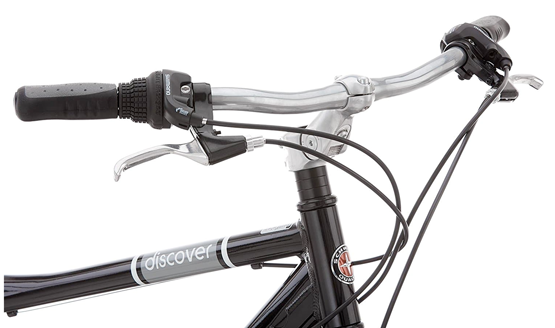 HandleBars
HandleBars
The type of handlebars on a hybrid bike plays a significant role in determining your riding comfort, control, and overall riding experience.
Here are some common types of handlebars found on hybrid bikes:
Flat Handlebars
Flat handlebars are a popular choice for hybrid bikes. They provide a more relaxed and upright riding position, promoting comfort and good visibility. Flat handlebars are wider, allowing for a comfortable hand position and better control. They are well-suited for casual riding, commuting, and shorter recreational trips.
Riser Handlebars
Riser handlebars have a slight upward sweep at the ends, offering a higher hand position compared to flat handlebars. This design provides a more upright riding posture and further enhances visibility. Riser handlebars can be a great choice for riders seeking a comfortable and relaxed riding position while still maintaining control.
Drop Handlebars
While drop handlebars are commonly associated with road bikes, some hybrid bikes may feature them to offer a more sporty or performance-oriented riding position. Drop handlebars provide multiple hand positions, allowing for better aerodynamics and increased efficiency. This type of handlebar is suitable for riders who want to prioritize speed and cover longer distances.
Adjustable Handlebars
Some hybrid bikes may feature adjustable handlebars that allow you to modify the handlebar angle and height. This feature allows you to fine-tune the handlebars to your preferred riding position and comfort level.
When choosing handlebars for your hybrid bike, consider the following factors:
Riding Style
Determine the type of riding you plan to do. If you prioritize comfort, visibility, and a relaxed riding position, flat or riser handlebars are recommended. For riders seeking a more performance-oriented or aerodynamic riding position, drop handlebars might be more suitable.
Comfort
Ensure that the handlebars provide a comfortable grip and hand position. Consider the width and shape of the handlebars, as well as the ability to adjust the handlebar angle to suit your preferences.
Control
Handlebars should offer a comfortable and stable grip, allowing you to maintain control of the bike. Different handlebar types provide varying levels of control, so choose one that matches your riding style and the terrain you’ll be encountering.
Hand Positions
If you anticipate longer rides, multiple hand positions provided by drop handlebars can help reduce fatigue by allowing you to change your hand position and posture.
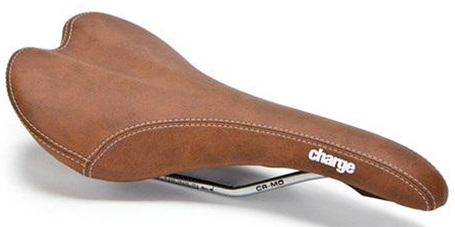 Saddle / Seat
Saddle / Seat
The saddle, or seat, on a hybrid bike is a crucial component that greatly affects your comfort and enjoyment while riding.
Finding the right saddle that suits your body shape, riding style, and preferences is essential.
Here are some considerations when it comes to the saddle:
Saddle Shape
Saddles come in various shapes to accommodate different riding positions and body types.
The shape of the saddle can vary in terms of width, length, curvature, and cutouts.
It’s important to choose a saddle that matches your sit bone width, as this will provide proper support and distribute your weight evenly.
Many bike shops offer tools to measure your sit bone width to help you choose the right saddle.
Cushioning and Padding
The level of cushioning and padding in a saddle can affect your comfort.
Some riders prefer a saddle with more padding for a plush and cushioned feel, while others prefer a firmer saddle that provides more support and better power transfer.
It’s important to strike a balance between cushioning and support to avoid discomfort or pressure points during longer rides.
Saddle Width
The width of the saddle should match your sit bone width.
A saddle that is too narrow can cause discomfort and pressure, while a saddle that is too wide can lead to chafing or rubbing.
Finding the right width ensures optimal support and comfort.
Saddle Material
Saddle materials can vary, including synthetic materials, leather, or a combination of both.
Synthetic materials are often more affordable, lightweight, and easy to clean.
Leather saddles tend to mold and conform to your body over time, offering a customized fit.
Consider the durability, maintenance requirements, and personal preference when choosing the saddle material.
Cutouts and Ventilation
Some saddles feature cutouts or channels in the center or along the length of the saddle.
These cutouts help to relieve pressure on sensitive areas, improve blood flow, and reduce numbness or discomfort.
Additionally, saddles with ventilation or perforations can enhance airflow and reduce heat buildup during rides.
Personal Fit and Testing
Each individual has unique preferences and comfort requirements when it comes to saddles.
It’s crucial to test different saddles to find the one that suits you best.
Many bike shops offer saddle fitting services and allow you to test ride saddles before making a final decision.
Remember that what works for one person may not work for another, so it’s important to find the saddle that feels most comfortable for you.
Budget
When considering buying a hybrid bike, your budget is an important factor to take into account.
The price range for hybrid bikes can vary significantly based on factors such as brand, materials, components, and features.
Determine Your Budget
Start by determining how much you are willing to spend on a hybrid bike. Having a budget in mind will help you narrow down your options and focus on bikes within your price range.
Establish Your Needs
Consider your specific needs and riding goals.
Determine the type of riding you plan to do, whether it’s commuting, leisurely rides, fitness training, or more off-road adventures.
This will help you determine the level of features and components you require and what you can prioritize within your budget.
Entry-Level vs. Mid-Range vs. High-End
Hybrid bikes are available at various price points, ranging from entry-level models to mid-range and high-end options.
Entry-level bikes tend to be more budget-friendly but may have fewer advanced features and components.
Mid-range bikes strike a balance between affordability and performance, while high-end bikes offer top-of-the-line components and advanced features for a higher price.
Consider Value for Money
It’s essential to evaluate the value for money that a particular bike offers.
Look for bikes that provide a good balance of quality components, durability, and features within your budget.
Compare different models and brands to identify the best options that meet your needs and offer the most value for your investment.
Research and Reviews
Do some research and read reviews from reliable sources to gather information about the bikes that fall within your budget range.
Online reviews, bike forums, and professional bike publications can provide insights into the quality, performance, and value of different models.
This information can help you make an informed decision and find a bike that offers the best combination of features and price.
Consider Long-Term Costs
Keep in mind that the initial purchase price of a bike is not the only expense.
Factor in potential costs for accessories, maintenance, and upgrades.
Additionally, investing in a higher-quality bike upfront may save you money in the long run by reducing the need for frequent repairs or part replacements.
Remember that while budget is an important consideration, it’s equally crucial to find a bike that meets your needs, offers good quality, and provides an enjoyable riding experience.
Popular Manufacturers Of Hybrid Bicycles:
Trek, Ribble, Canyon, Marin, Scott, Argon, Bianchi, Breezer, Burley, Cannondale, Devinci, Diamondback, Electra, Felt, Fuji, Gary Fisher, Giant, Ibex, Iron Horse, Jamis, K2, KHS, Kona, Mongoose, Motobecane, Norco, Raleigh, Rocky Mountain, Salsa, Schwinn, Sette, Specialized, Swobo,, Vision.
